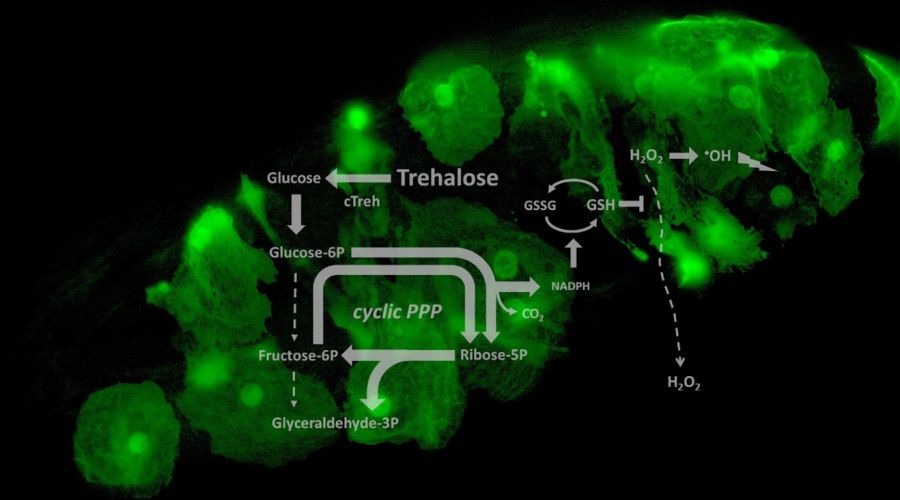Cyclic pentose phosphate pathway protects the host from both pathogen and its own immune response

A new publication by Michalina Kazek and Lenka Chodáková from the Laboratory of Molecular Integrative Physiology in Drosophila (Faculty of Science USB) published in the prestigious journal PLoS Biology, shows how important it is for organisms to set the balance between the strength of the immune response and protecting themselves from the toxic effects of their own immune response. Whether it is better to have a higher chance of surviving the fight against the pathogen at the expense of the number of offspring is a fundamental dilemma from an evolutionary point of view. In this research, Tomáš Doležal's group also demonstrated the role of the cyclic pentose phosphate pathway in the functioning of immune cells. This pathway is the most efficient way to produce NADPH, which is essential for both radical production (fighting the pathogen) and antioxidant production (protecting the host from escaping radicals). This role has so far been demonstrated experimentally by the only other work in mammalian neutrophils. For this research, it was first necessary to implement a sophisticated analysis of metabolism by tracing metabolites labelled with the stable carbon isotope C13, which was achieved in collaboration with Martin Moos from the Laboratory of Analytical Biochemistry and Metabolomics (Biology center CAS). This publication is the first to use C13 in live fruit fly larvae to analyze the metabolism specifically in immune cells.
Kazek M, Chodáková L, Lehr K, Strych L, Nedbalová P, et al. (2024) Glucose and trehalose metabolism through the cyclic pentose phosphate pathway shapes pathogen resistance and host protection in Drosophila. PLOS Biology 22(5): e3002299. https://doi.org/10.1371/journal.pbio.3002299
Conact: doc. Mgr. Tomáš Doležal, Ph.D. (
Picture: Expression of cytoplasmic trehalase in Drosophila lamellocytes encapsulating the parasitoid wasp egg. Trehalase converts trehalose to glucose, which is metabolized in the cyclic pentose phosphate pathway to protect the host from the toxicity of its own immune response. (Credit: Lenka Chodáková)